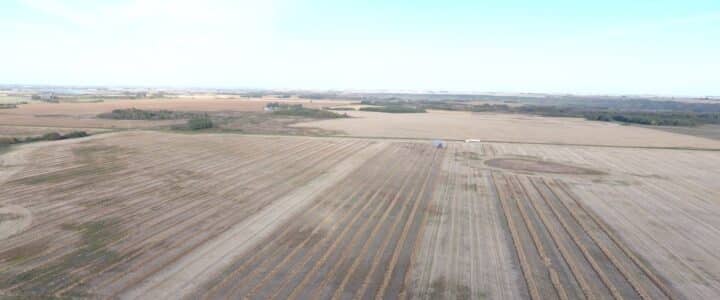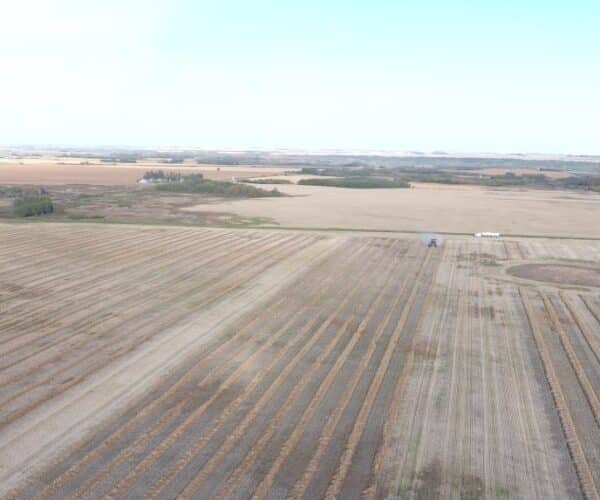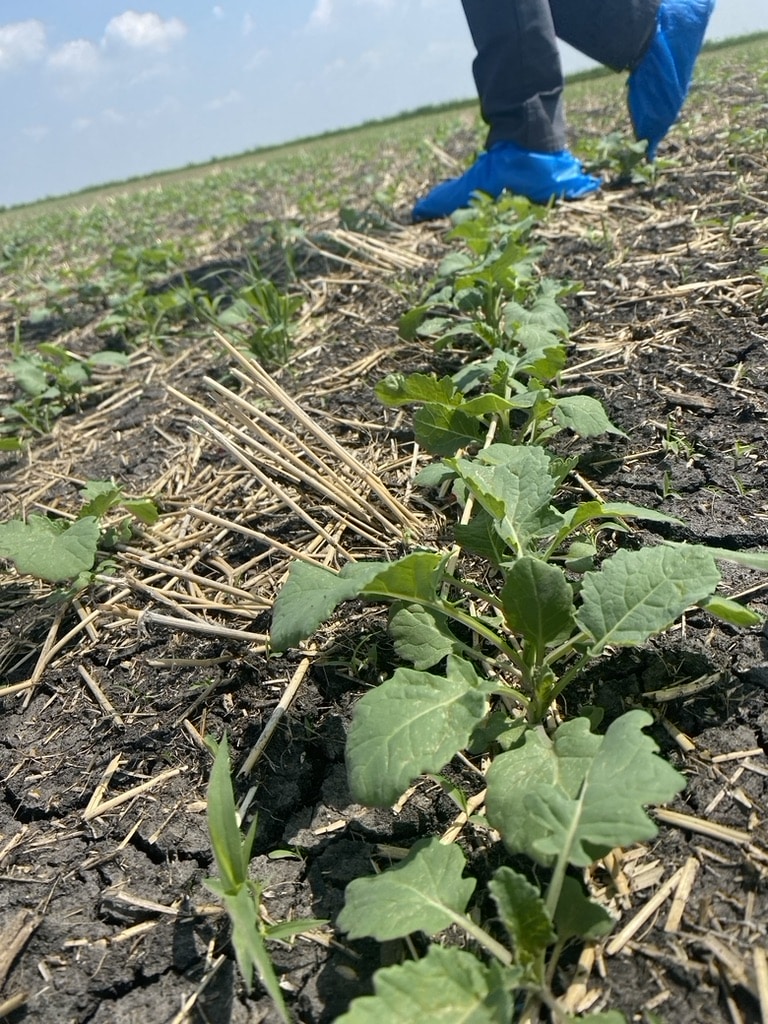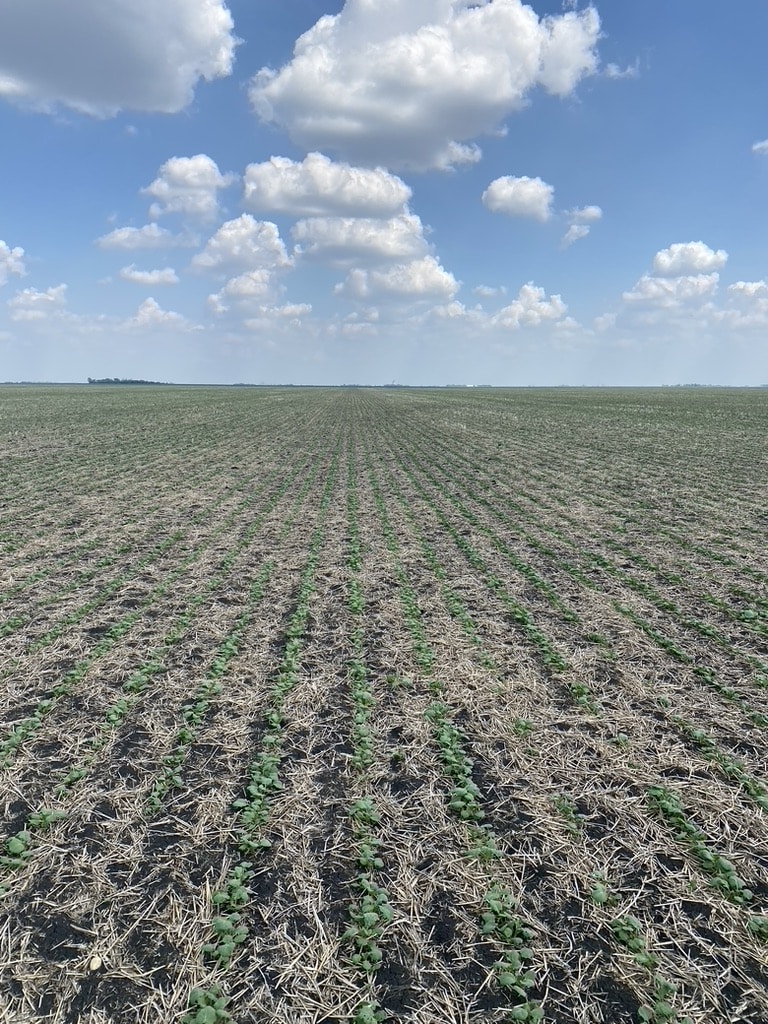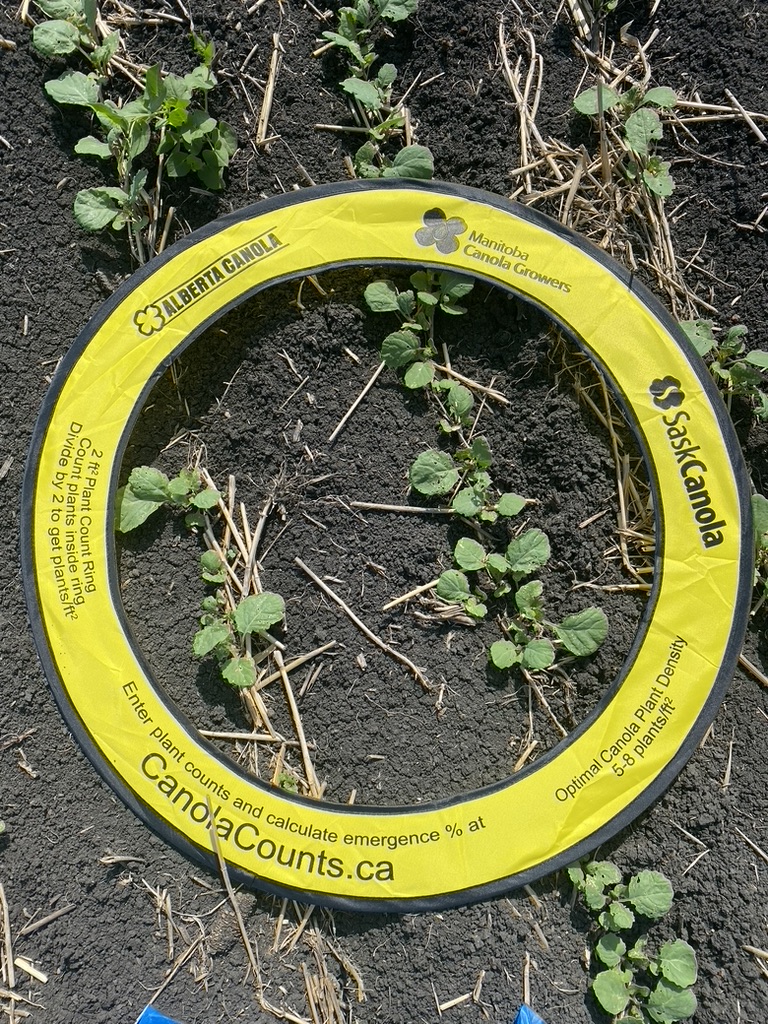Mid-season research plots are great to look at during summer field days, but it is the end of season results that bring the most value to the trials. While the findings from the current year’s trials are in progress, results from last year’s trials are just as important to review (as no two growing seasons are ever the same). This blog showcases on-farm research trial results from last year and previous years, as well as support for those wanting try out on-farm field scale trials on their own farms (highlighting the importance of completing the trial in the fall to maximize the value of it.
Pilot on-farm research in Manitoba
In 2022 Manitoba Canola Growers (MCGA) launched a pilot canola on-farm research program which involved farmers working with independent agronomists across the province to conduct field scale trials using field scale equipment.
Three trial types were carried out:
- seeding rate
- nitrogen rate
- anti-fungal bioinoculant
The value that these on-farm trials provided to three of the farmers participants, check out the November 2022 Manitoba Research Bulletin and the 2022 trial results page for more details – including the Understanding the Results section which provides helpful notes on Interpreting statistical analysis to draw conclusions.
Apply this on your farm
- Consider if nitrogen rates are maximizing your canola yields.
- Ensure additional inputs provide a return on investment.
- Use these learnings and check out these trial tips and on-farm research recommendations when mapping out your own on-farm field scale trial.
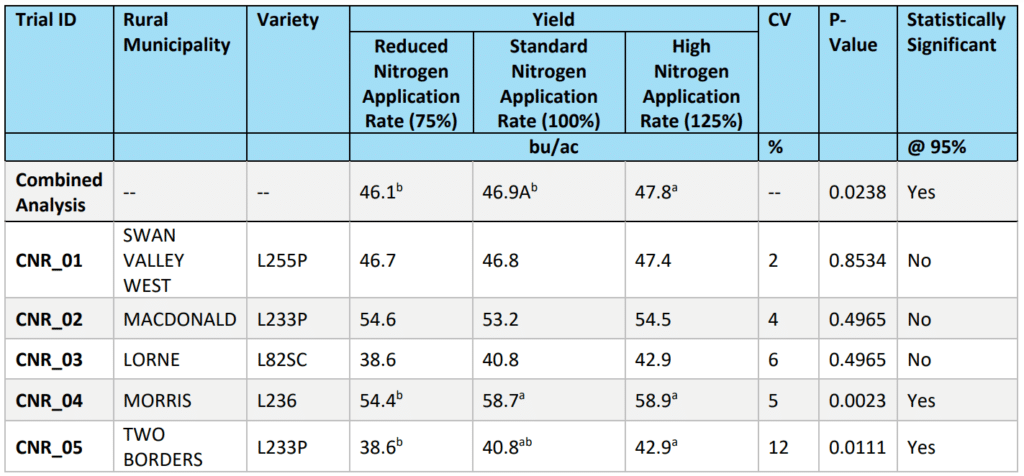
Yield benefit to increased nitrogen rates
Aimed at identifying optimal nitrogen fertilizer rates, three nitrogen rates: standard (100% of recommended rate), reduced (75%) and higher (125%) rates were compared at five locations (in the rural municipality of Swan River West, Macdonald, Lorne, Morris and Two Borders).
The combined analysis (across all five sites) reported significantly higher yield from trials with the 125% higher nitrogen rate compared to the standard (100%) and reduced (75%) rate. However, when considering individual sites, only two of the locations produced significantly higher yields at higher nitrogen rates, while the other three locations reported no significant yield differences between nitrogen rates.
Check out the plant counts, nitrogen tissue content at bolting, nitrogen use efficiency and seed moisture on the 2022 trial results page and in the nitrogen rate summary document for additional location, varietal and statistical information on this field trial.
No significant yield impact of bioinoculant
Three locations (in the rural municipality of Woodlands, Oakland and Louise) investigated the level of disease control and yield response of canola treated with a foliar application of KGS-3 antifungal bioinoculant compared to untreated canola. While blackleg and verticillium stripe ratings were 0 for all sites, there was variation in seed moisture, which are provided in the 2022 trial results. The bioinoculant summary provides further location, varietal and statistical information on this field trial.
Overall (across all three locations) there was no significant yield differences between plants treated with the KGS-3 antifungal bioinoculant and the untreated plants. Individual site results reported numerically (but not significantly) higher yield values in the treated plants compared to the untreated and one site had numerically (but not significantly) higher yield values in the untreated plants compared to the treated.
Variation in seeding rates by sites
With the objective to identify optimal seeding rates based on return on investment, this four-site field experiment compared a reduced (75% of standard), standard (100% of standard), and higher (125% of standard) rate of seeding. In this trial, the standard seeding rate varied by site, with 2.75 lbs seed/ac at the Brokenhead location, 4.6 lbs seed/ac at the Two Borders locations, 4.8 lbs seed/ac at the Swan Valley West location and 5 lbs seed/ac at the Roblin location.
The results reported no significant yield differences between the reduced, standard or high seeding rates across all locations. There were some numeric differences at individual sites, but no significant differences reported between the different seeding rates at any sites.
Spring and fall plant counts, emergence and survival percentages, seed yield and seed moisture values are available in the 2022 trials results. The seeding rate summary provides additional location, varietal and statistical information on this field trial.
Prairie-wide on-farm research program
An on-farm research program that ran from 2013-2017 was the Ultimate Canola Challenge (UCC). Coordinated by the Canola Council of Canada (CCC), the program evolved into a vehicle to support canola growers in evaluating practices and products using their own field scale trials, to sustainably and profitably obtain higher yields (2015-2017).
Lack of product effect on yield

After a different nitrogen rate (compared to the recommended rate based) in the 2013-2014 UCC trials was the only treatment to have a significant impact on yield, this parameter was further investigated in the two following years of the program.
Impact of increased nitrogen rates
The 2016 and 2017 UCC program also had a nitrogen rate trial in which producers applied their base rate of nitrogen at seeding as a control, based on a soil test results and yield targets, and then applied a 25% greater nitrogen rate treatment. This was replicated four times in each field in the 2016 trials and three times in the 2017 trials (except for one location that only had two replicates). Though more sites started, 17 sites (11 in Manitoba and 6 in Saskatchewan) completed the trial, taking yield measurements (along with other details recommended in the nitrogen rate trial data collection sheet from each of the replicates (25% increased nitrogen rate treatment) as well as the control (the base rate of nitrogen).
Overall (across all sites) there was a statistically significant yield response to the application of the 25% increased nitrogen rate. Higher yields were reported on the increased nitrogen rate treatments at all locations except one, though the yields were only statistically significant at 7 of the 15 individual sites. Interestingly, a quick economic analysis found that it was only profitable at one site (of the three of the 2016 UCC sites considered in this analysis) to implement the additional nitrogen application.
Learnings and resources to help you run an on-farm trial
In addition to reviewing these UCC trial tips and How an on-farm trial can be like a vacation, for best results when conducting an on-farm trial:
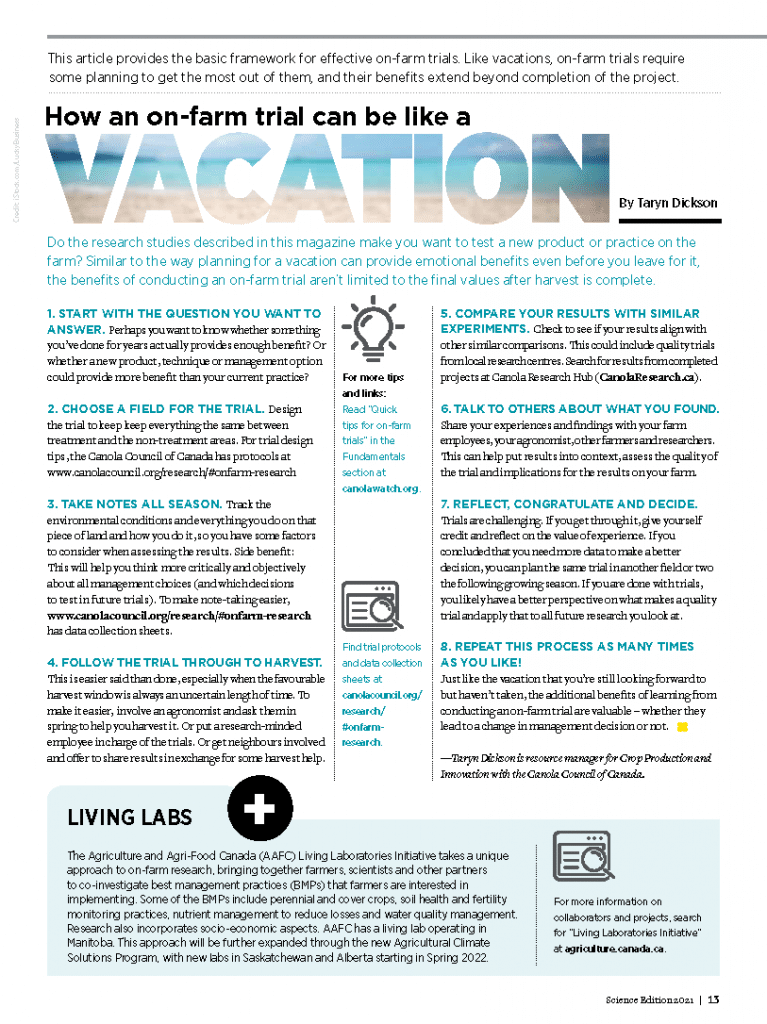
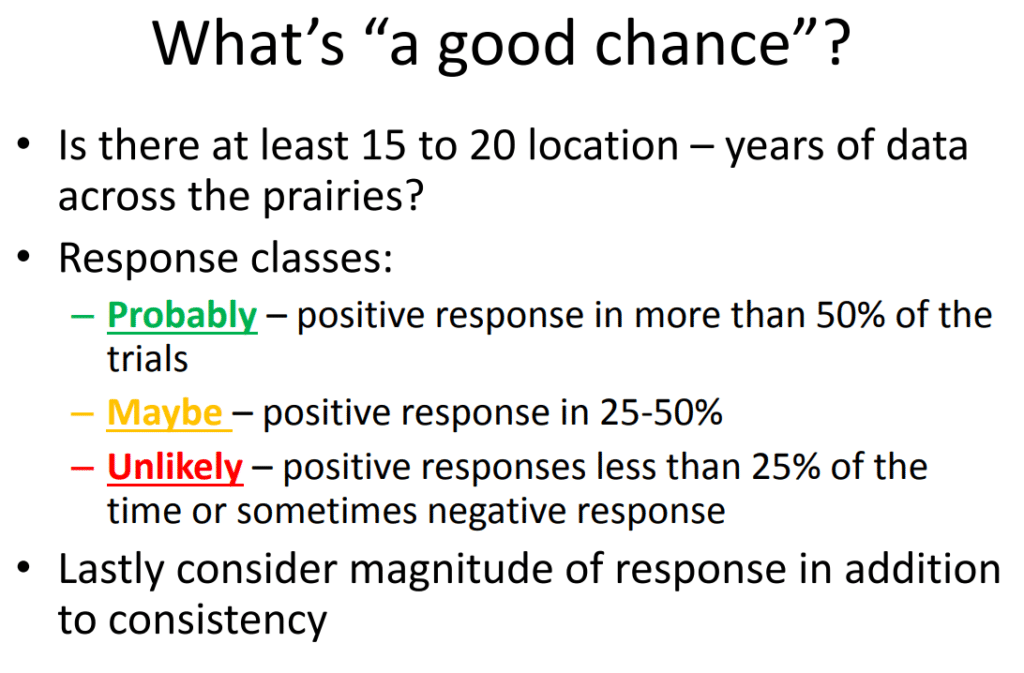
- Start with a scientific protocol, such as CCC’s on-farm research protocols (adjust treatments as needed).
- Monitor the trial throughout the season and use a CCC data collection sheet to record details.
- Follow through with late season and harvest assessments, as highlighted in the Check twice… blog
- Check out the IHARF On-Farm Research Guide and Data Analysis Tool, which offers an On-Farm Research Guide and Data Analysis Tool.
- After comparing final yields with statistics, conduct an economic analysis – even a basic one, to provide values such as the 2016 UCC nitrogen economics table displays.
- As noted by Murray Hartman, previous oilseed specialist for Alberta – only spend money on things with “a good chance” for response based on many trials. See explanation in image right/below.
- Review this Canola Watch article for more tips on running on-farm trials.
- If you want to try running on-farm research trial, check out the Canola Digest article: How an on-farm trial can be like a vacation.
To check out research as conducted as an observational on-farm study (to improve our understanding of the interactive effects of management and environment on canola stand establishment), check out the An on-farm approach to monitor and evaluate the interaction of management and environment on canola stand establishment and disease development.
Future on-farm results to await
- MCGA’s 2023 on-farm trials (pictured below) will add site years to 2022 trials and add a new trial type to increase the range of canola management practices studied.
- SaskCanola is also running an on-farm & field-scale research program in 2023. These field-scale trials investigate whether there are agronomic and economic benefits to applying a commercially available, foliar-applied N-fixing bacteria product in wheat or canola. Producer-cooperators will determine the value of utilizing this product under the typical management practices and environmental conditions of their operation. Learn more on SaskCanola’s website.
Published August 4, 2023


